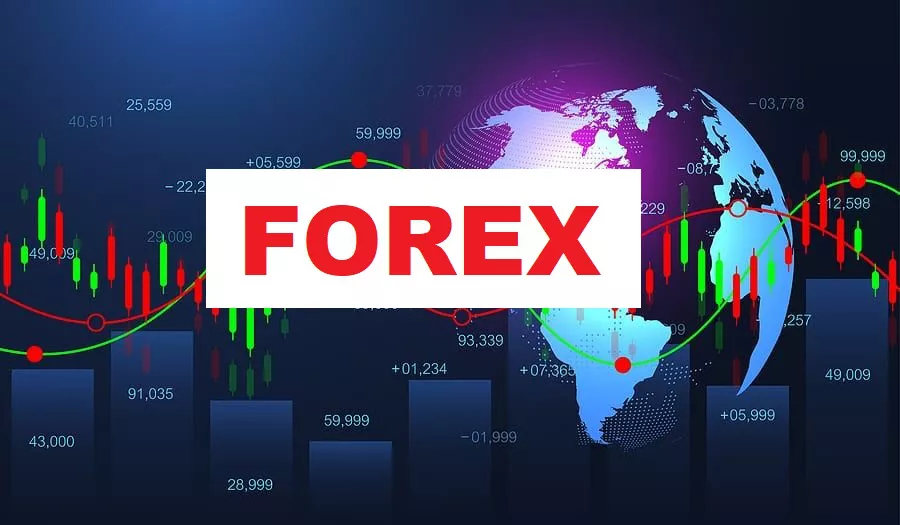Foreign exchange (Forex) trading is an exciting and dynamic financial market where currencies are bought and sold. The Forex market is one of the largest and most liquid markets globally, with daily trading volumes exceeding $6 trillion. This vast marketplace offers opportunities for both professional traders and individual investors to engage in currency trading. In this article, we will explore the ins and outs of Forex trading, including its mechanics, participants, tools, and how it works in the financial ecosystem.
What is Forex? Understanding the Basics
Forex, short for foreign exchange, refers to the global marketplace where currencies are traded. It is a decentralized market where currencies are bought and sold in pairs. For example, if you are trading the EUR/USD pair, you are simultaneously buying the Euro while selling the U.S. Dollar. Forex trading is done over-the-counter (OTC), meaning transactions happen directly between parties, often through brokers or financial institutions.
The goal of trading Forex is to profit from the fluctuation in currency values. Traders speculate on whether the value of a currency will rise or fall relative to another currency. This speculation can be highly profitable but also carries significant risk.
How Forex Trading Works
Currency Pairs: The Foundation of Forex
In Forex, currencies are always quoted in pairs. A currency pair consists of a base currency and a quote currency. The base currency is the first currency in the pair, and the quote currency is the second one. For example, in the currency pair EUR/USD, EUR is the base currency, and USD is the quote currency.
The value of a currency pair is determined by how much of the quote currency is needed to purchase one unit of the base currency. If EUR/USD is quoted at 1.2000, it means that 1 Euro is equal to 1.20 U.S. Dollars. When the exchange rate goes up, the base currency is strengthening relative to the quote currency. Conversely, when the exchange rate goes down, the base currency is weakening.
The Mechanics of a Forex Trade
When you execute a Forex trade, you are buying one currency while simultaneously selling another. This is done through a Forex broker or financial institution. The Forex market operates 24 hours a day, five days a week, and provides opportunities for traders to engage at any time.
A trader can choose to take a position in the market by going “long” (buying) or “short” (selling). The decision to buy or sell is based on technical and fundamental analysis, predicting whether the value of a currency pair will rise or fall.
Leverage: A Double-Edged Sword
One key feature of Forex trading is the use of leverage. Leverage allows traders to control a larger position in the market with a smaller amount of capital. For example, a leverage ratio of 50:1 means that for every $1 you invest, you can control $50 worth of currency. While leverage can magnify profits, it also amplifies potential losses. It is crucial for Forex traders to use leverage wisely and implement risk management strategies to protect their capital.
Key Participants in the Forex Market
Central Banks and Governments
Central banks and governments play a significant role in the Forex market. They influence the value of their national currencies through monetary policies, such as interest rates and money supply. Central banks often intervene in the Forex market to stabilize or adjust their currency’s value. For instance, if a country’s currency is appreciating too rapidly, its central bank might step in to sell the currency and prevent excessive strength.
Commercial Banks and Financial Institutions
Commercial banks are major players in the Forex market. They facilitate transactions for corporations, governments, and individual clients. These banks trade large volumes of currency daily, both for themselves and on behalf of their customers. Financial institutions also engage in Forex trading for speculative purposes, hedging their foreign currency exposure, or facilitating international trade.
Retail Traders
Retail traders are individuals who trade Forex through brokers. They typically trade with smaller amounts of capital compared to institutional traders, but their impact on the market can still be significant. With the rise of online trading platforms, retail traders have become a vital part of the Forex market, contributing to its liquidity and volatility.
Hedge Funds and Investment Firms
Hedge funds and investment firms are among the largest traders in the Forex market. These institutions use sophisticated strategies to manage large portfolios and often employ leverage to maximize returns. They may use Forex trading for speculation, hedging, or to diversify their investments. Their trading activities can influence currency prices, especially in the short term.
Factors Influencing Forex Markets
Economic Indicators
Economic indicators are essential in analyzing currency movements. Key economic data, such as GDP growth, inflation rates, and employment numbers, can significantly affect the value of a currency. For example, a stronger-than-expected GDP report may cause a currency to appreciate, as investors anticipate that the country’s economy will perform better than expected.
Interest Rates and Monetary Policy
Interest rates set by central banks are one of the most influential factors in Forex trading. When a central bank raises interest rates, it often leads to an increase in the value of the national currency, as higher rates attract foreign investment. Conversely, lower interest rates can weaken a currency as investors seek higher returns elsewhere.
Geopolitical Events and Market Sentiment
Geopolitical events, such as elections, trade disputes, and wars, can cause volatility in the Forex market. These events can lead to changes in market sentiment, which influences currency values. For example, a political crisis in a country may cause investors to move their capital away from that currency, leading to depreciation.
Popular Forex Trading Strategies
Scalping: Fast and Frequent Trades
Scalping is a short-term trading strategy where traders make many quick trades to profit from small price movements. Scalpers typically hold positions for seconds to minutes, aiming to make small profits that accumulate over time. This strategy requires a deep understanding of market dynamics and the ability to react quickly to price changes.
Day Trading: Trading Within a Single Day
Day trading involves buying and selling currency pairs within the same trading day. Day traders aim to capitalize on short-term price movements, closing all positions by the end of the day. This strategy requires a keen understanding of market trends and the ability to make rapid decisions based on technical analysis.
Swing Trading: Capturing Medium-Term Trends
Swing traders look for opportunities to capture medium-term price movements, typically holding positions for several days or weeks. This strategy involves analyzing price trends and identifying entry and exit points based on technical indicators and chart patterns. Swing trading can be less stressful than scalping or day trading, as it allows for more time to make decisions.
Position Trading: Long-Term Strategies
Position trading is a long-term strategy where traders hold positions for weeks, months, or even years. This approach is based on fundamental analysis and focuses on long-term trends rather than short-term price fluctuations. Position traders typically rely on economic data and central bank policies to make decisions about buying or selling currencies.
Tools and Platforms for Forex Trading
Trading Platforms
Forex trading is conducted through online platforms provided by brokers. These platforms offer tools for charting, technical analysis, and order execution. Some of the most popular trading platforms include MetaTrader 4 (MT4), MetaTrader 5 (MT5), and cTrader. These platforms allow traders to place orders, monitor their positions, and analyze market data in real time.
Technical Analysis Tools
Technical analysis is a method of analyzing price movements using historical data and chart patterns. Tools such as moving averages, Relative Strength Index (RSI), and Bollinger Bands help traders identify trends and make informed decisions. Technical analysis is widely used in Forex trading to predict future price movements based on past behavior.
Fundamental Analysis Tools
Fundamental analysis involves evaluating a country’s economic indicators, interest rates, and political climate to forecast currency movements. Traders use news feeds, economic calendars, and reports from central banks to stay informed about global events that may impact currency values.
Conclusion
Forex trading offers vast opportunities for those who understand its complexities and use the right strategies. With its 24-hour nature, the Forex market provides a unique environment for traders to capitalize on currency fluctuations. However, the market is highly volatile, and without a solid understanding of its mechanics, it can be risky. Traders must carefully consider economic indicators, geopolitical events, and market sentiment when making decisions. Whether you’re a beginner or an experienced trader, continuous learning, disciplined strategies, and risk management are key to success in the Forex market.
In conclusion, Forex trading is not just a financial activity; it is a dynamic, fast-paced market that demands knowledge, skill, and emotional control. By understanding the fundamental and technical aspects of Forex, traders can navigate the market effectively, making informed decisions that maximize their chances of success.
Related topics:



































